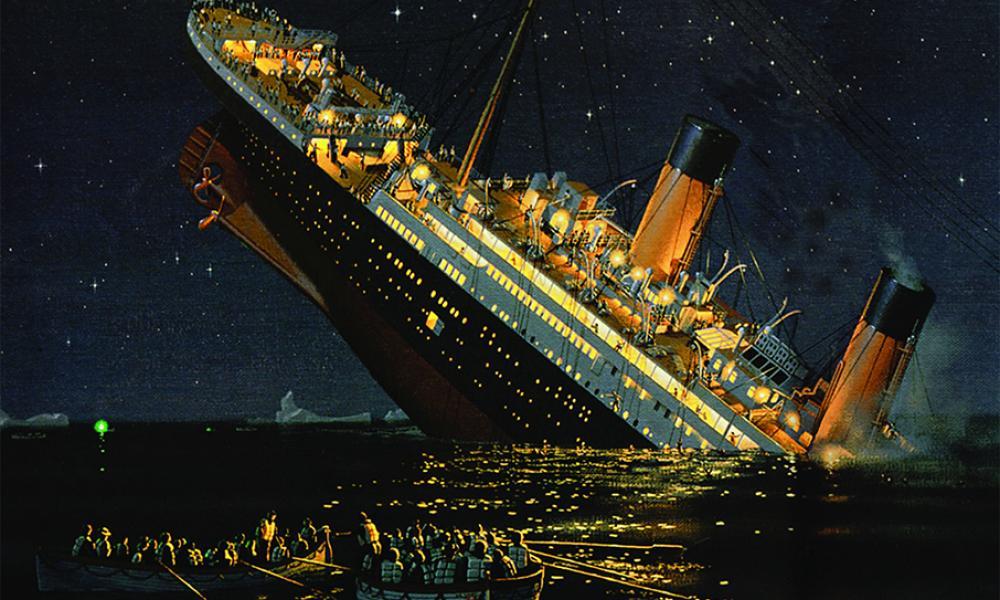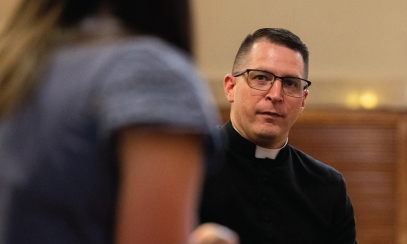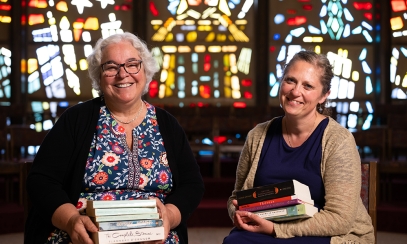
2,200 Passengers, a brave priest, and a ship named Titanic
"May the all-powerful Lord grant us a restful night and a peaceful death.” This is the prayer that Catholic priests recite at the end of each day during Night Prayer – part of the prayers every priest promises to pray throughout each day. It was this same brief prayer, albeit in Latin at the time, that was uttered by Father Thomas Byles as he strolled along the moonlit deck of a magnificent ocean liner en route to New York the evening of April 14, 1912. The name of that luxurious ship was RMS Titanic. That night, 100 years ago, would be anything but restful, and Father Byles’ death – along with those of 1,516 other souls, after that great ship struck a deadly iceberg in the North Atlantic – would be anything but peaceful.
The Titanic, her legend and mystique have been seared into the collective memory of the world, especially now that a full century has passed since her disastrous maiden voyage – a voyage that ended 2.5 miles under the surface of the icy sea. A number of motion pictures have attempted to capture the Titanic’s mythology, including the epic version created by James Cameron in 1997, which garnered a cache of Academy Awards.
In this most recent version, just as the ship strikes the iceberg and the characters of Jack and Rose grab each other, a distorted figure dressed in black can be seen behind the couple on the deck. The audience later sees his face, discovering as the Titanic plunges into the sea, that the actor James Lancaster is portraying Father Thomas Byles.
As the deck creeps past a 45-degree angle to vertical horror, Father Byles borrows the words of the Book of Revelation – the final pages in the Bible – speaking of humanity’s salvation won for us by Christ and he prays, “[God] shall wipe away all the tears from their eyes and there shall be no more death.” (Rev. 21:4) Then the ship begins her descent into the abyss.
Did Father Byles really quote Revelation? We don’t know; but we do know he witnessed the iceberg striking the hull of the Titanic as he prayed from his breviary and we do know what he did as the ship was sinking, cognizant that countless persons would not live through the night.
Born Roussel Davids Byles on Feb. 26, 1870, he took the name Thomas when he converted from Congregationalism (in which his father Alfred was a well-respected minister) to Roman Catholicism in the late 1890s. After studying at Oxford and in Rome, he was ordained a priest in Rome on June 15, 1902, at the age of 32. Returning to his native England for short stints assisting in smaller parishes, Father Byles was later named pastor of St. Helen Parish in Ongar in the county of Essex.
Shortly after Thomas’ conversion to Catholicism, his brother William followed. William, who had moved to New York, cabled his priest-brother to officiate at his upcoming wedding. On April 10, 1912, Father Byles boarded the newest and assuredly most expensive addition to the White Star fleet – the RMS Titanic – at Southampton. With ticket number 244310 tucked within his clerical cassock, he boarded the five-star floating hotel, never to set foot on land again. The cost of that ticket was 14 pounds in English currency, the equivalent of $1,500 today.
Father Byles had made arrangements with the Titanic’s captain, Edward J. Smith, to celebrate Mass. According to survivors, Father Byles’ sermon focused on how the passengers needed to have lifebelts in the shape of prayer and the sacraments to save their souls from spiritual shipwreck. Little did he know that prayer would be the only hope many of the worshippers listening to him would have that night.
At 11:40 p.m., the “unsinkable” Titanic struck an iceberg. Father Byles ran to third class, where he tried to calm the passengers. The priest’s calm demeanor and self-control impressed many. He began to recite the rosary and continued to lead people to the lifeboats, consoling them and encouraging their personal prayers, not only for themselves, but also for those still on the ship. According to survivor Helen Mocklare, “one sailor warned the priest of his danger and begged him to board a boat. Father Byles refused.” So, too, did he refuse a life jacket – three times! Each time, he wrapped the jacket around another and kept praying with growing crowds around him.
He continuously prayed the rosary and absolved as many from their sins as he could. Many witnesses remembered this as one of the last sights they saw as their lifeboats were lowered into the sea: the brave, selfless priest kneeling with the faithful, praying the Act of Contrition and preparing them and himself to meet God face-to-face. Father Byles went down with the ship and his body was never recovered.
The great Catholic author G.K. Chesterton, who, like Father Byles, was a convert, once said: “The greatest sin is that we forget; the greatest grace is that we remember that we forgot.” May we never forget the sacrifices of those who helped their fellow passengers to safety and a second chance at life from the decks of the Titanic.
The Titanic artifact exhibition will remain at the Henry Ford Museum in Detroit through Sept. 30, 2012. For more information, visit www.thehenryford.com.



